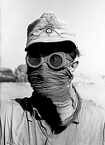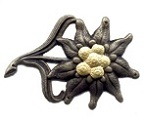janh
Posts: 1216
Joined: 6/12/2007
Status: offline

|
quote:
ORIGINAL: alfonso
Why do the Germans have a high proficiency (NationalMorale=75) in June 1941? In theory, because they were battle-hardened veterans. Back in 1938 the German Army performed rather poorly during Otto, the military walk into Austria, and in November 1939, after the Polish campaign, von Brauchitsch wrote a memorandum to Hitler explaining the shortcomings in the performance of the German Army.We can deduce that their improvement was indeed due mostly to their battle experience, and not training alone. After Poland there were campaigns in Norway, Denmark, Low Countries, France , Yugoslavia. None of those campaigns were really long, or incredibly difficult, but supposedly the Germans acquired in the process the summit of military perfection.
Then, how is it that after two years of constant fighting the Soviet proficiency is set at 50 in June 1943?
I think your logic is nearly the same I would see. And Tullius wrote it up there - the German army was very good at its time, but they were not all excellent supermen. And the French or Russians did also enter with a certain level of proficiency.
I would, however, say that a typical army, going thru an average evolution in terms of training its soldiers, NCOs, officers and developing new doctrines (air-land, blitzkrieg, defensive ones etc) and learning the advantages of its particular equipment, would correspond to an average rate of "proficiency/combat experience/training" gain, i.e. national morale. Probably the learning speeds are similar. Say maybe 10 NM points can be gained per year for a nation.
Then the remaining question is the choice of starting NM for both sides, which determines, how after a few years (assuming no high losses and consequent shortening of training times for replacements occur) the proficiency rating compare.
Say the Stalinist cleansing prior to the war urt the state of the Russian army a lot and, hence, accounts for a lower starting NM in 1941 then the German Army had. Then there must be difference remaining if both sides learn similarly fast. Now factor in that the Germans had to shorten their training times in the Ersatzheer subsequently as the need for replacements grew worse over time, but Soviets basically started to create a proper training during 41, the former proficiency has become diluted, while the latter should not. It should go up after typical training times, i.e. after 42 (hence the dip in NM in 1942) when the first really trained recruits reach Soviet units. I suppose that is how national morale should be read. It doesn't have much, perhaps nothing to do with will to fight.
|
 Printable Version
Printable Version








 1941 is about right. Ok, no catastrophic losses but the Germans grab more things than in the real thing. Not to mention that NO German player really sticks to the original German plan (aka Barbarossa) and yet they want to force the Soviets to stick to history (aka send the lambs to slaughter aka mega-pockets everywhere and every turn)...
1941 is about right. Ok, no catastrophic losses but the Germans grab more things than in the real thing. Not to mention that NO German player really sticks to the original German plan (aka Barbarossa) and yet they want to force the Soviets to stick to history (aka send the lambs to slaughter aka mega-pockets everywhere and every turn)... 







 New Messages
New Messages No New Messages
No New Messages Hot Topic w/ New Messages
Hot Topic w/ New Messages Hot Topic w/o New Messages
Hot Topic w/o New Messages Locked w/ New Messages
Locked w/ New Messages Locked w/o New Messages
Locked w/o New Messages Post New Thread
Post New Thread